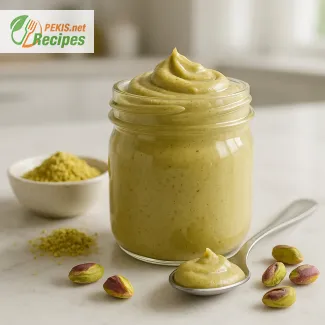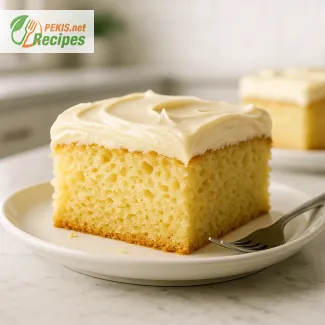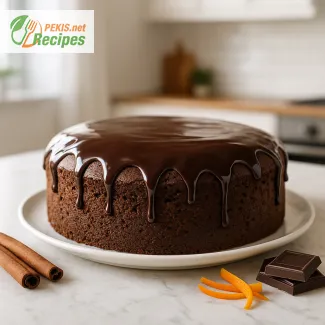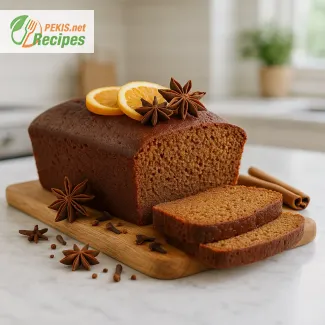
Indulge in the Irresistible Delight of Mochi Donuts
The Perfect Fusion of Chewy and Crispy
Mochi donuts are a sensational fusion of Japanese mochi and classic American donuts, offering a uniquely chewy yet crispy texture that captivates dessert lovers worldwide. Originating in Japan, this delightful confection has gained immense popularity for its light, airy, and slightly stretchy bite, making it unlike any traditional donut. Whether you are a fan of glazed donuts, chewy mochi, or gourmet treats, mochi donuts deliver a one-of-a-kind experience that’s impossible to resist.
Their distinctive shape, often resembling a ring of small, connected dough balls, gives them a visually appealing look that enhances their charm. With a golden brown exterior and a soft, chewy center, they provide an unforgettable contrast of textures that sets them apart from ordinary fried pastries.
A Japanese-American Dessert Sensation
Mochi donuts first gained popularity in Japan, thanks to Mister Donut’s famous "Pon de Ring". This unique take on donuts quickly became a household favorite, paving the way for countless variations across the globe. Today, they are a staple in Japanese bakeries, trendy dessert cafés, and homemade recipes, embraced for their delightful chewiness and customizable flavors.
What makes mochi donuts stand out is their use of tapioca starch or glutinous rice flour, which gives them that signature bouncy texture. Unlike traditional yeast-based or cake donuts, these treats have an airy yet dense consistency that melts in your mouth while maintaining a satisfying bite.
The Secret to Their Addictive Chewiness
The key ingredient in mochi donuts is glutinous rice flour, also known as sweet rice flour or mochiko. This special flour is responsible for the distinctively soft and stretchy interior that defines mochi-based desserts. When fried, the outer layer becomes lightly crisp, creating a delicious contrast of crunch and chew.
Unlike conventional donuts, which rely on all-purpose flour and yeast, mochi donuts have a gluten-free base that gives them a lighter, slightly elastic texture. This makes them perfect for those who love chewy desserts but prefer something less dense than traditional donuts.
Versatile Flavors and Customizable Glazes
One of the best things about mochi donuts is their versatility in flavors and toppings. From classic vanilla and chocolate glazes to exotic matcha, taro, and black sesame coatings, there’s no limit to the creativity you can bring to these treats. Some popular flavor ideas include:
- Matcha glaze – A slightly bitter, earthy contrast to the donut’s sweetness.
- Strawberry glaze – Bright, fruity, and naturally vibrant.
- Ube (purple yam) glaze – A creamy, nutty flavor with a stunning violet hue.
- Miso caramel drizzle – A sweet-and-savory twist for adventurous palates.
- Cookies and cream – Crushed chocolate cookies for a delightful crunch.
Whether you prefer a rich chocolate dip, a fruity glaze, or a simple dusting of powdered sugar, mochi donuts are highly customizable, making them a favorite among dessert enthusiasts.
Perfect for Any Occasion
Mochi donuts are more than just a treat; they’re a delightful experience. Their eye-catching shape, soft interior, and crispy exterior make them perfect for:
- Afternoon tea and coffee breaks – A light yet indulgent pairing with your favorite hot drink.
- Birthday celebrations and parties – A fun alternative to traditional cakes and cupcakes.
- DIY baking projects – An easy, rewarding recipe for home bakers of all skill levels.
- Gifting and special occasions – Wrapped in a box, they make a unique homemade gift.
No matter the occasion, these delightfully chewy donuts are guaranteed to impress friends and family.
Why You Need to Try Mochi Donuts
If you haven’t tried mochi donuts yet, you’re missing out on one of the most exciting dessert trends of recent years. Their perfect balance of chewiness, lightness, and crunch makes them a must-try treat for anyone who loves Japanese-inspired desserts, innovative pastries, or simple yet delicious sweets.
With endless flavor possibilities, a straightforward cooking process, and an irresistible texture, mochi donuts are a baking trend worth exploring. Whether you choose to deep-fry them for a classic crispiness or bake them for a healthier twist, they’re bound to become a staple in your dessert repertoire.
Now that you’re ready to dive into the world of mochi donuts, let’s explore how to make them from scratch, ensuring you get that perfectly chewy and crispy bite every time!
- Prepare the dough: In a small saucepan, heat milk and butter over low heat until the butter melts completely. Remove from heat and let it cool slightly.
- Mix dry ingredients: In a large mixing bowl, whisk together glutinous rice flour, all-purpose flour, baking powder, salt, and sugar.
- Combine wet and dry ingredients: Beat eggs into the cooled milk mixture, then gradually add this to the dry ingredients while stirring. Mix until a soft, slightly sticky dough forms.
- Shape the donuts: Lightly flour your hands and roll small dough balls, each about 3 cm (1.2 inches) in diameter. Arrange 6-8 balls in a circular pattern on parchment paper, pressing them together gently.
- Heat the oil: Pour vegetable oil into a deep pan and heat it to 170°C (340°F). Carefully place the parchment paper with the donut into the hot oil. The paper will release as the dough begins to fry—remove it carefully with tongs.
- Fry the donuts: Fry each donut for 2-3 minutes per side until golden brown and crispy. Remove and drain on a paper towel.
- Prepare the glaze: In a bowl, whisk together powdered sugar, milk, and vanilla extract until smooth.
- Coat the donuts: Dip the warm donuts into the glaze, allowing excess to drip off. Let them set on a wire rack before serving.
Elevating Mochi Donuts: Expert Tips for a Perfectly Chewy and Flavorful Treat
The Key to Achieving the Perfect Texture
One of the most defining characteristics of mochi donuts is their chewy, elastic texture that makes them unique compared to traditional donuts. This signature consistency is largely due to glutinous rice flour (mochiko), which provides an irresistibly soft bite. However, not all mochiko flours are the same—some brands yield denser results, while others create a lighter, airier dough. To enhance texture, consider mixing different starches like tapioca starch or potato starch, which can help achieve a more delicate chewiness.
The balance of moisture and flour is also critical. Too much liquid can make the dough too sticky and hard to shape, while too little results in dry, tough donuts. If you find the dough challenging to work with, try chilling it for 15-30 minutes before shaping. This firms up the dough slightly, making it easier to handle while preserving the soft interior.
Enhancing Flavor with Additional Ingredients
While traditional mochi donuts have a mild sweetness, they can be customized with a variety of flavors to make them even more irresistible. Some great ways to enhance their taste include:
Infusing the Dough with Flavor
- Matcha Powder: Adding 2-3 teaspoons of matcha to the dry ingredients gives the donuts a subtle, earthy flavor and a vibrant green hue.
- Cocoa Powder: A few tablespoons of cocoa powder create a rich chocolate mochi donut with a deep, indulgent taste.
- Pumpkin or Sweet Potato Puree: For a seasonal variation, mixing ¼ cup of puree into the dough adds natural sweetness and a soft texture.
Elevating the Glaze
- Honey or Maple Syrup: Replacing part of the powdered sugar with honey or maple syrup in the glaze adds a more complex depth of sweetness.
- Citrus Zest: A touch of lemon, orange, or yuzu zest brings out a fresh, tangy contrast to the sweetness.
- Salted Caramel Drizzle: A light drizzle of caramel with a pinch of sea salt adds a delightful sweet-salty combination.
Why Homemade Mochi Donuts Are Superior
While mochi donuts are available at specialty bakeries, homemade versions offer significant advantages. The freshness factor is key—store-bought or pre-packaged mochi donuts often lose their chewy texture within hours. When made at home, they can be enjoyed immediately after frying, at the peak of their crispiness and softness.
Another major benefit of making them yourself is control over ingredients. Many commercial mochi donuts contain preservatives, artificial flavors, or excess sugar. By preparing them at home, you can adjust the sweetness, use high-quality ingredients, and even substitute for dietary needs.
Common Mistakes to Avoid
Even with a great recipe, mistakes can impact the final result. Here are some common pitfalls and how to avoid them:
- Overmixing the Dough: Unlike traditional donuts, mochi donuts do not require gluten development. Overmixing can make them too dense. Stir the ingredients just until combined for the best texture.
- Frying at the Wrong Temperature: If the oil is too hot, the exterior will burn before the inside cooks. If too cool, the donuts absorb excess oil and become greasy. Maintaining an oil temperature of 170°C (340°F) is crucial.
- Skipping the Cooling Step Before Glazing: If the donuts are too hot when glazed, the icing will melt and slide off. Allow them to cool slightly to properly absorb the glaze.
Healthier Alternatives Without Losing the Authentic Texture
For those looking for a healthier alternative, there are ways to modify the recipe without sacrificing the signature chewiness.
- Baking Instead of Frying: While frying gives a crispy exterior, baking at 180°C (350°F) for about 12-15 minutes still produces delicious results. The texture will be slightly different but still enjoyable.
- Using Alternative Sweeteners: Replace white sugar with coconut sugar, monk fruit sweetener, or honey to reduce the glycemic index while maintaining sweetness.
- Dairy-Free Variations: Use almond milk, coconut milk, or oat milk instead of regular milk, and swap butter for coconut oil or dairy-free margarine.
Mochi donuts offer a delightful fusion of chewy and crispy textures, making them a truly special treat. With a few adjustments, you can create personalized flavors, improve texture, and even make them healthier. Whether you prefer a classic vanilla glaze or an innovative matcha-caramel drizzle, the key is to experiment and find your perfect variation. By following these tips, you can turn a simple mochi donut recipe into an extraordinary dessert that everyone will love.
- Contains eggs, dairy, and gluten.
- To make gluten-free, replace all-purpose flour with additional glutinous rice flour or a gluten-free flour blend.
- For a dairy-free version, substitute butter with plant-based margarine and milk with almond or coconut milk.
- Calcium: 30 mg – supports bone health
- Iron: 0.5 mg – helps oxygen transport in the blood
- Potassium: 90 mg – essential for muscle function
- Magnesium: 8 mg – aids energy production
- Vitamin E: Protects cells from oxidative stress
- Polyphenols (from glutinous rice flour): Help reduce inflammation
- Flavonoids (from vanilla extract): Support immune function





